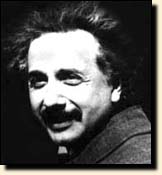Open Sesame !!
You exit a busy store, point your key fob across the crowded parking lot, press a button and “Pop!” — your car door unlocks. How does the car know it’s you? And why don’t other cars open, too? Most new vehicles offer what the industry calls remote keyless entry. Manufacturers program a microprocessor in each car and in its dedicated key fob with an algorithmic formula that generates a secret, encrypted code that changes each time a button is pressed. Each formula is unique, so one person’s fob cannot open any other vehicle. Current - day garage door openers work similarly. “The scheme has been around for 10 years and has proven very secure,” says Fanie Duvenhage, product marketing manager at Microchip Technology, a Chandler, Ariz., firm whose code-generating processors run the majority of U.S. automotive fobs. “We have not seen any successful attack on the algorithm.” Success has spawned even greater convenience and protection. In “passive keyless entry,” a driver standing beside a door begins to lift its handle, and a transceiver inside the car compares code with a key fob or smart card in the driver’s pocket or handbag— handy for someone carrying an armful of groceries or packages. “Immobilization” systems will not allow a car to start after a key is inserted into the ignition unless a chip built into the key head provides the right code to a chip inside the ignition housing. In European countries that have mandated immobilizers in new cars, theft of current models has decreased by more than 50 percent. Immobilizer and passive entry communications take place at the relatively low frequency of 125 kilohertz. Remote keyless systems tap much higher frequencies, typically 315 megahertz in the U.S. and Japan, in part to span a parking lot or front lawn. European manufacturers have been using 433 megahertz, notes Alec Makdessian, business manager at integrated-circuits maker Maxim Integrated Products in Sunnyvale, Calif., “but they are moving up to 868 megahertz because the lower bands are becoming congested.” About two million new keyless gadgets worldwide add to the saturation every year.
1. Auto manufacturer programs a car’s receiver and a key fob with a software algorithm that will generate a unique 32-bit number each time they are activated. The number is created along a preset pattern determined by a formula that only that vehicle and fob share, so one person’s fob can’t open another’s car.
2. Driver presses a fob button, and it transmits a stream of 64-bit data packets. The receiver captures one full packet comprising a serial number, a new secret number and a command (unlock door). If the serial number matches, the receiver also generates a new secret number. If the numbers agree, the receiver instructs the car’s controller to open the door. The number is created with encryption technology so a thief cannot decipher it if he manages to capture the transmission with a radio scanner.
3. If a fob is pressed while too far from the car, when it is pressed again the new secret number will be further along the pattern than the number the receiver will generate. The receiver waits for the driver to press the fob again. If the increment matches what the receiver’s formula predicts would be generated, the receiver accepts the fob as the correct one, updates its memory and executes the command.
Back to Articles









